A Grand Itinerary For A Walking Tour of Santo Domingo
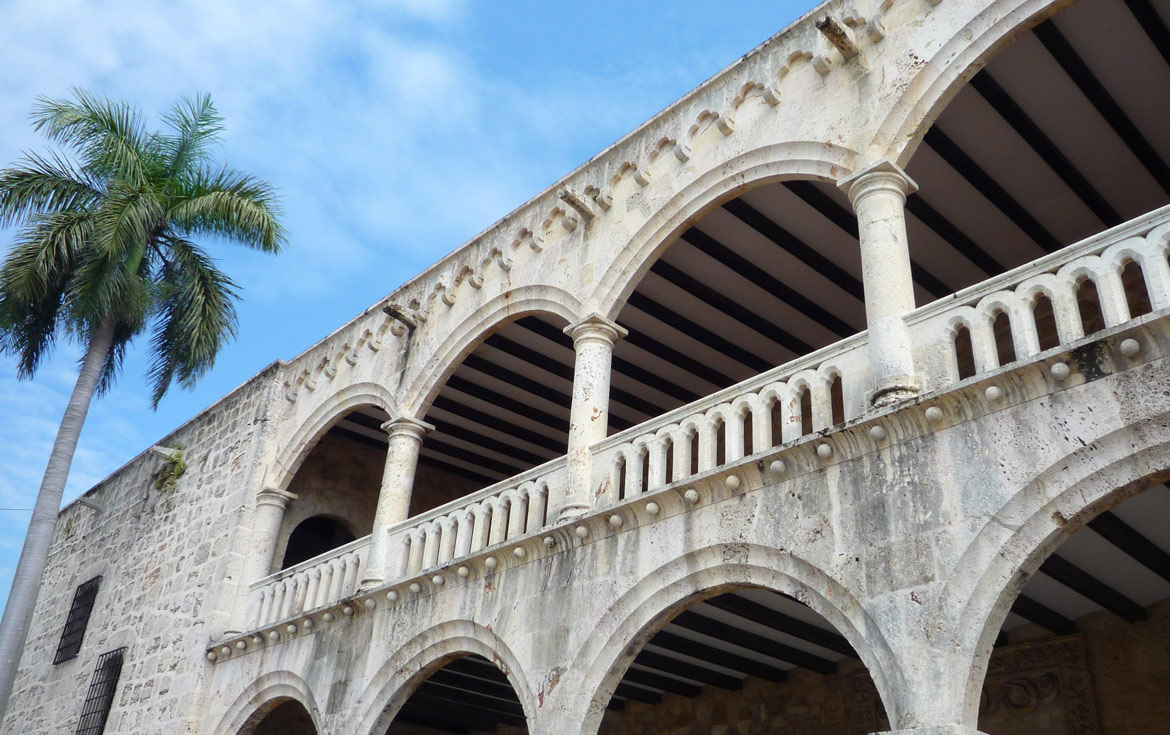
All you need for a walking tour of Santo Domingo is a guide book with a map and a good pair of walking shoes. A large bottle of water tucked into your travel handbag is a good idea too. This is what I had with me during my one day, self-guided walking tour of the city’s historic Zona Colonial on a hot sunny January day in 2009.
I’ve been going down memory lane lately, reviewing my old photos from this trip on my Flickr account. Taken with a simple point & shoot camera, without much editing, I’ve decided to spruce them up with Photoshop. How times have changed! I was single and looking younger in 2009, and on an adventure.
Santo Domingo Is For History Lovers
My one day in Santo Domingo was an eye-opener. Although many think of sandy beaches when somebody mentions vacationing in the Dominican Republic, there’s more to it.
Few realize that this country’s capital city is the home of the oldest permanent European settlement the New World. For history lovers, Santo Domingo is a key city to visit when touring the Caribbean.
The historic Colonial City (Ciudad Colonial – known colloquially as Zona Colonial) was originally established by Christopher Columbus’ younger brother, Bartholomew,
in 1502. It was located on the east bank of the Ozama River. Its current area spreads across 5 square kilometres, and is located on the west bank of the river that cuts through the city.
Santo Domingo was the central base for exploration for the Spanish in the early 16th century. Many of the buildings built in this early period still stand today and make up the key landmarks that you can visit during a walking tour of the Zona Colonial.
My Walking Tour Of Santo Domingo
I started my day walking tour of Santo Domingo at Parque Colon. My hotel room at Hotel Conde del Penalba was on the corner of Calle Arzobispo Merino and Calle El Conde, located at the northwest corner of the Parque.
I woke up at 5:30 a.m. to the calls of “Choco latte…” from the vendor offering coffee services to the workers heading to their jobs to set up before business opened for the day. No alarm clock was needed, but perhaps a cup of that coffee would be nice!

After a quick, nutritious breakfast at 8 a.m. in the hotel’s restaurant, I met up with my fellow solo female traveler and hotel room neighbour – Agnes – and we headed out to explore the city’s historic landmarks.
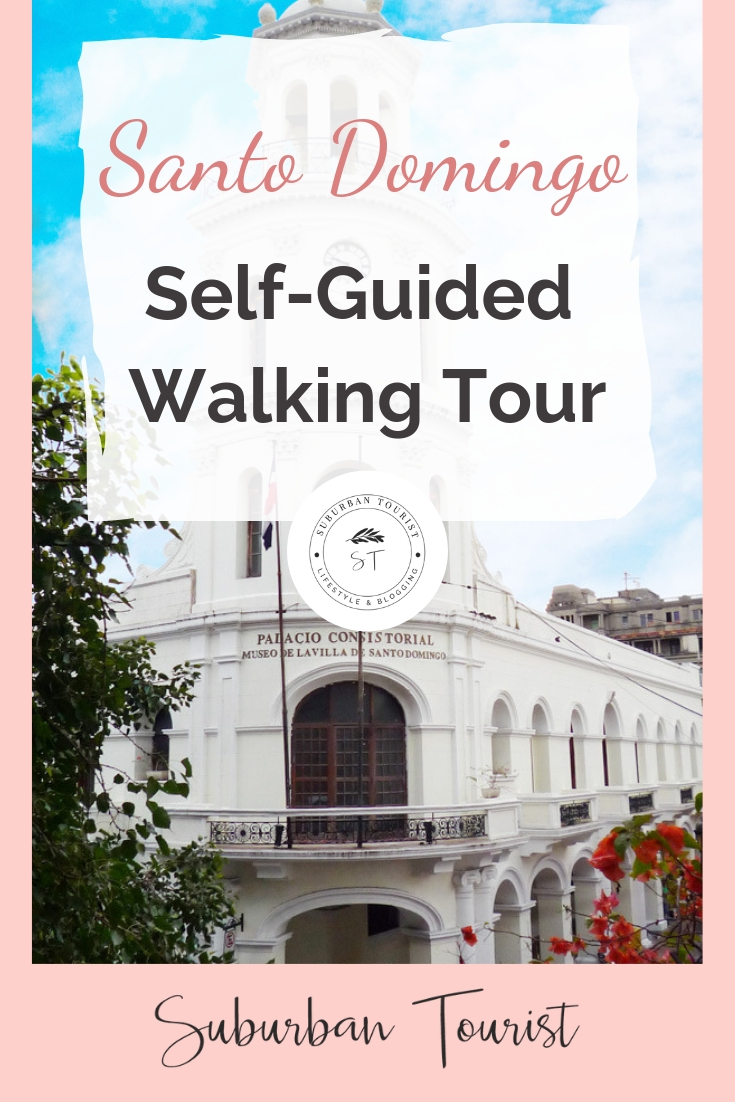
Parque Colon
We did a brief stop first at the Cathedral, right across from our hotel – the Cathedral of Santa María la Menor (St. Mary of the Incarnation). It’s the oldest cathedral in the Americas, built between 1512 and 1540.
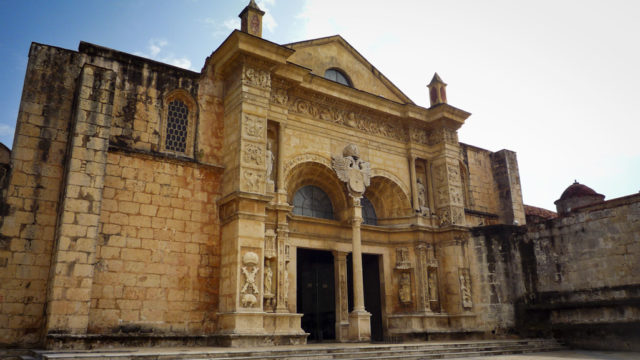
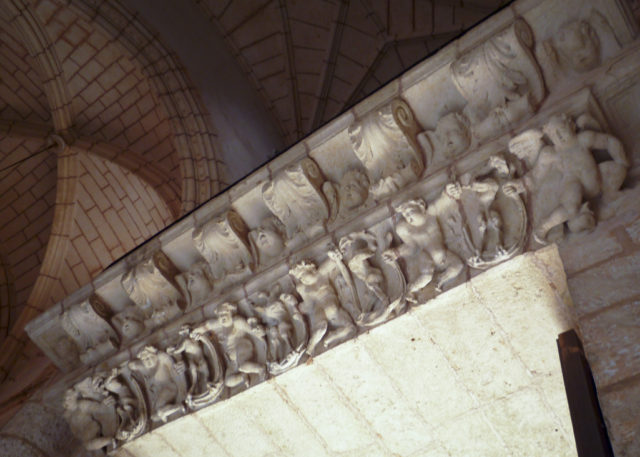
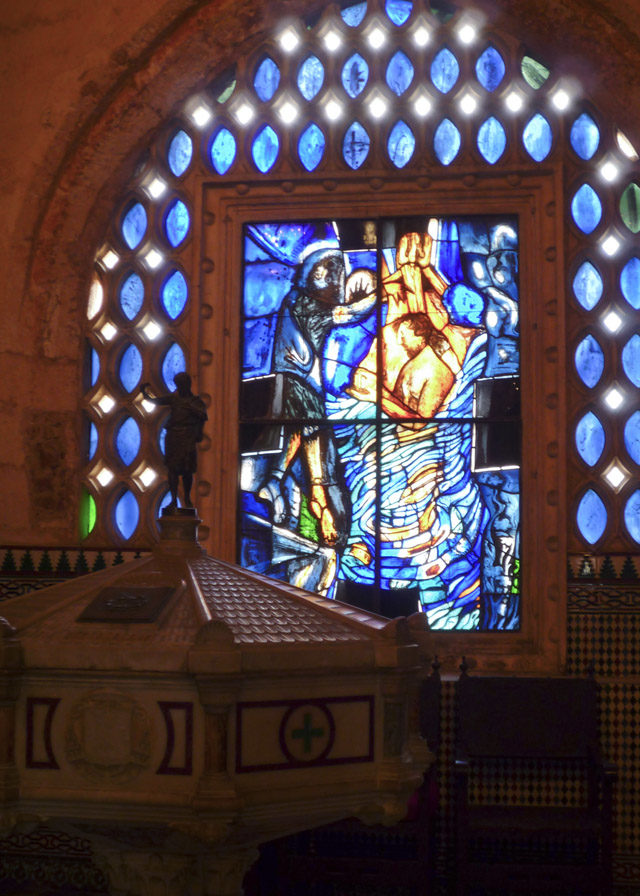
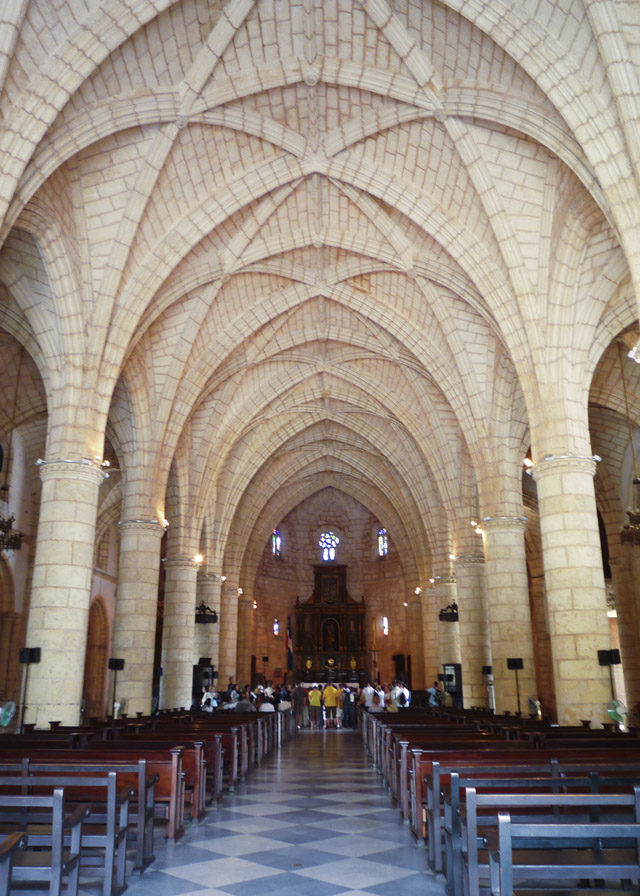
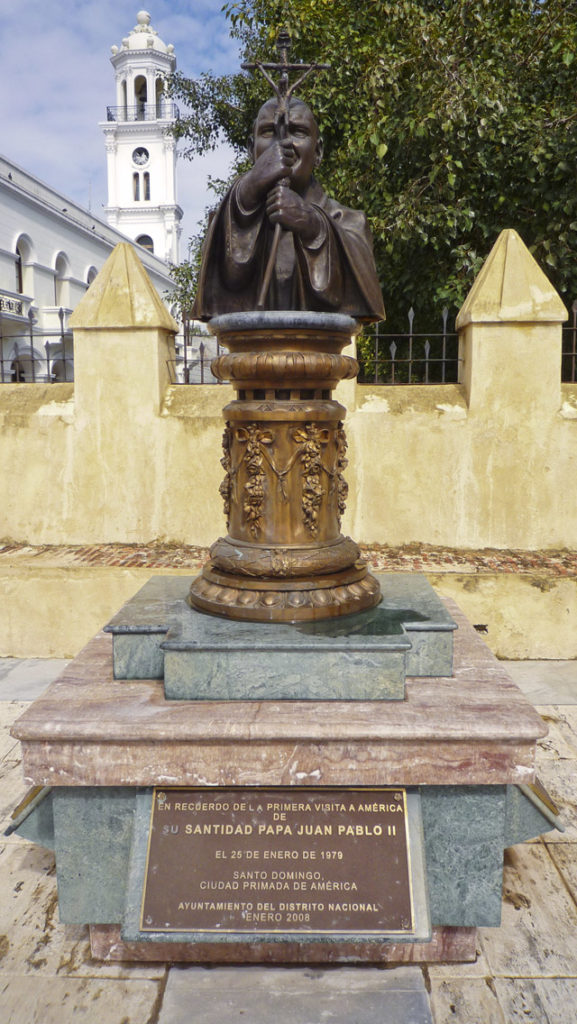

Beautifully carved stonework, statues, and details adorn the cathedral sparsely. It has the flavour of a European church but with minimal decorations.
A bust of Saint John Paul II, commemorating his visit to the Cathedral during his time as Pope stands at the entrance. Inside, the eye is drawn upwards to the arches and then straight forward to the central altar.
Backtracking, we walked along Calle El Conde and stopped into a small shopping area. Boutiques with tourist mementos and other gifts line both sides of the alley. However, your eye is drawn upwards to the beautifully designed glass ceiling, and the finely designed opening to the various floors.
A hint of art deco style in the railings as well as the stained glass windows make for a pleasing place to stop and shop.
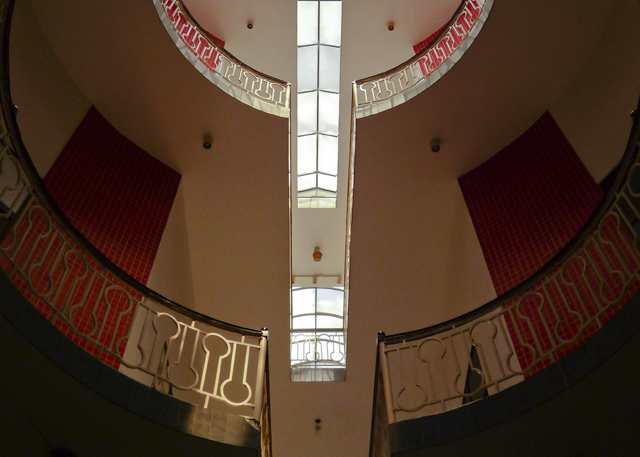
Historic Buildings
Walking further along Calle El Conde, we came to Calle las Damas and a series of key historic buildings. Here you find the Fortaleza Ozamam, a 16th-century castle. Nearby is the Casa de Bastidas, now a children’s museum.
Further along is the Museo de la Casas Reales – the Museum of the Royal Houses. It’s at this spot that you pass by a sundial, commemorating the historic sea voyages that brought Columbus to the New World.
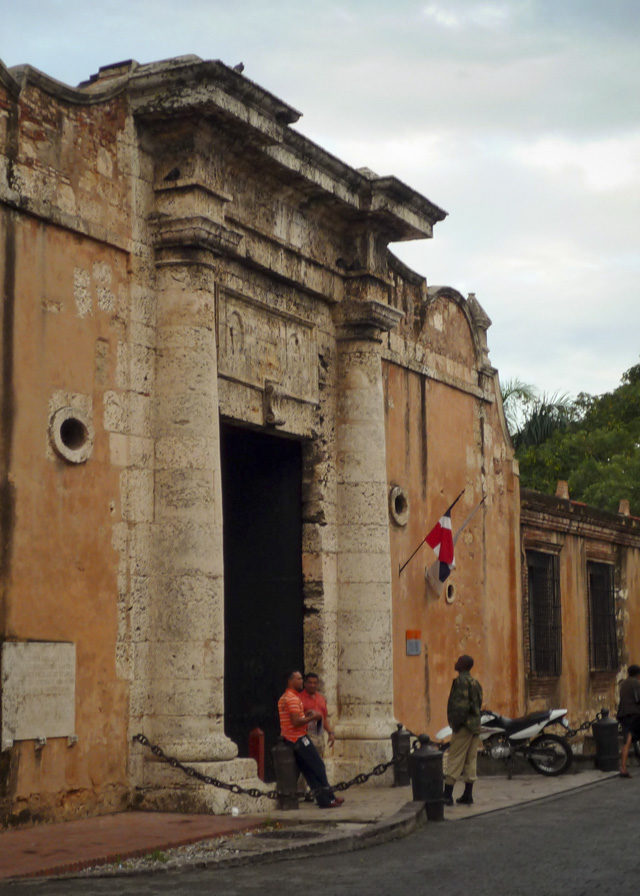
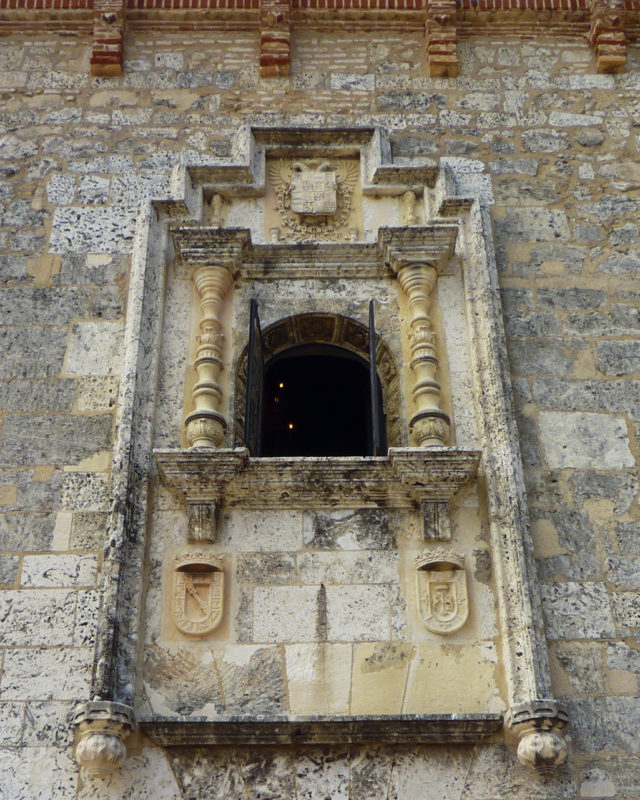

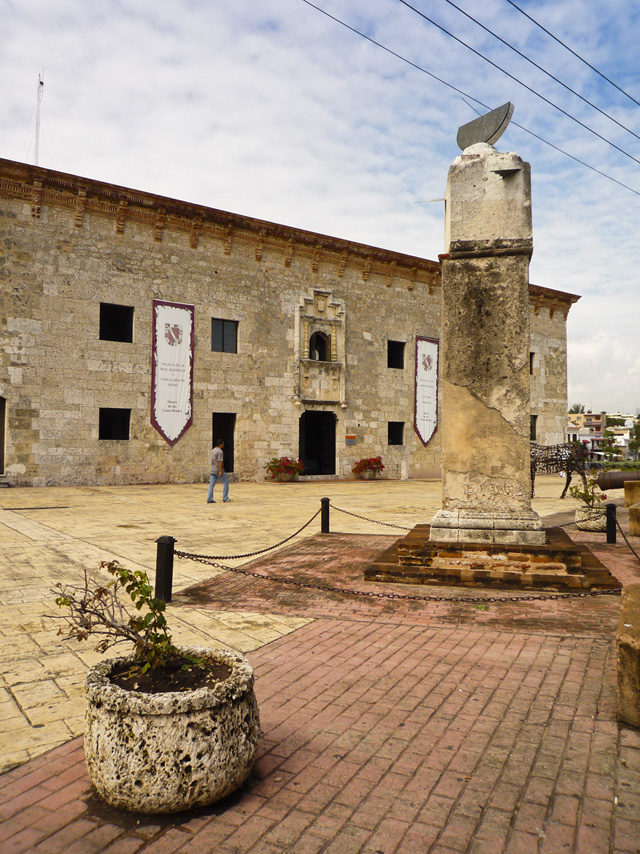
Walking past these historic buildings, we headed north to a huge plaza and the location of Alcazar de Colon.
This is the palace that served as the residence of the viceroy of La Espanola, and was built by Christopher Columbus’ son Diego. Now a museum, it houses the country’s best collection of Medieval and Renaissance European artworks.
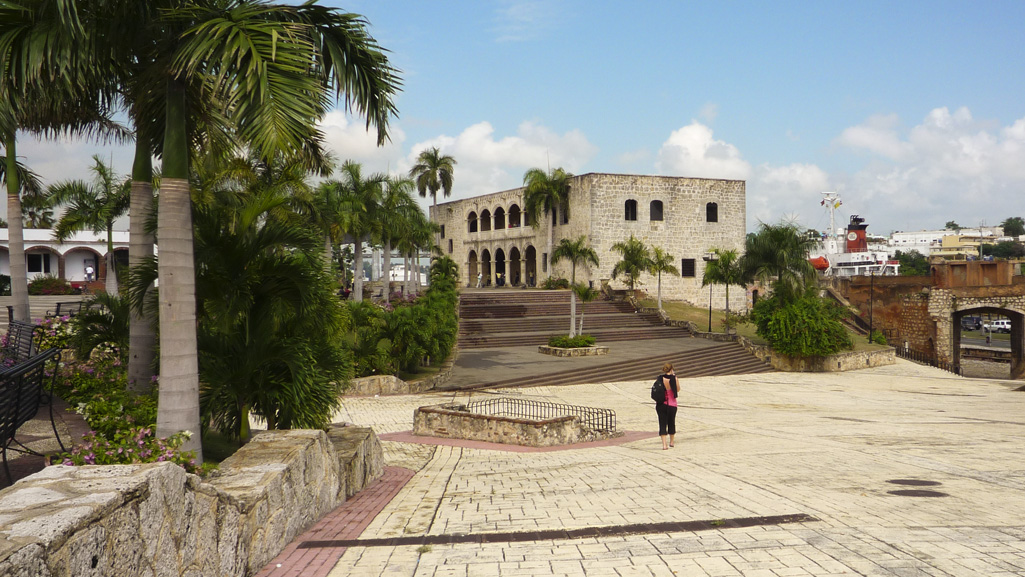
The facade of this once much larger mansion, is eye-catching in its almost symmetrical design. It was sacked by Sir Francis Drake in 1586, and over the centuries went into ruin before being restored in the 1950s.
You can do a self-guided tour of the palace and its artworks.
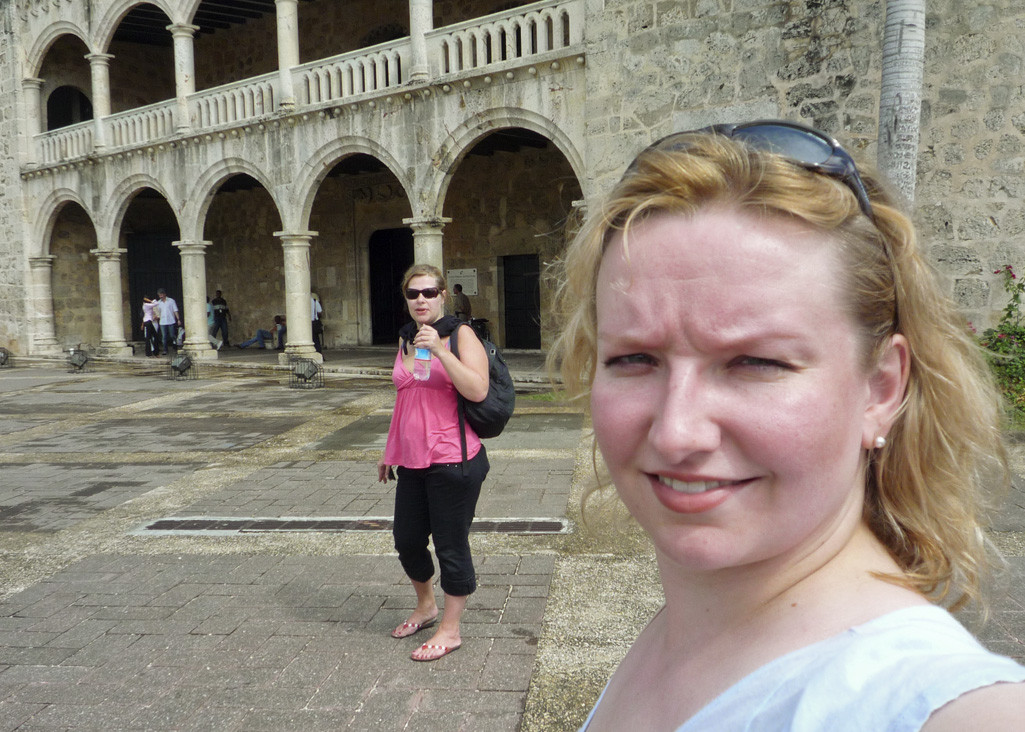
Monastery Ruins
By-passing the square, we continued on to the ruins of San Francisco Monastery – the first of its kind in the New World, built in 1508. Like the Alcazar de Colon, it was attacked by Sir Francis Drake.
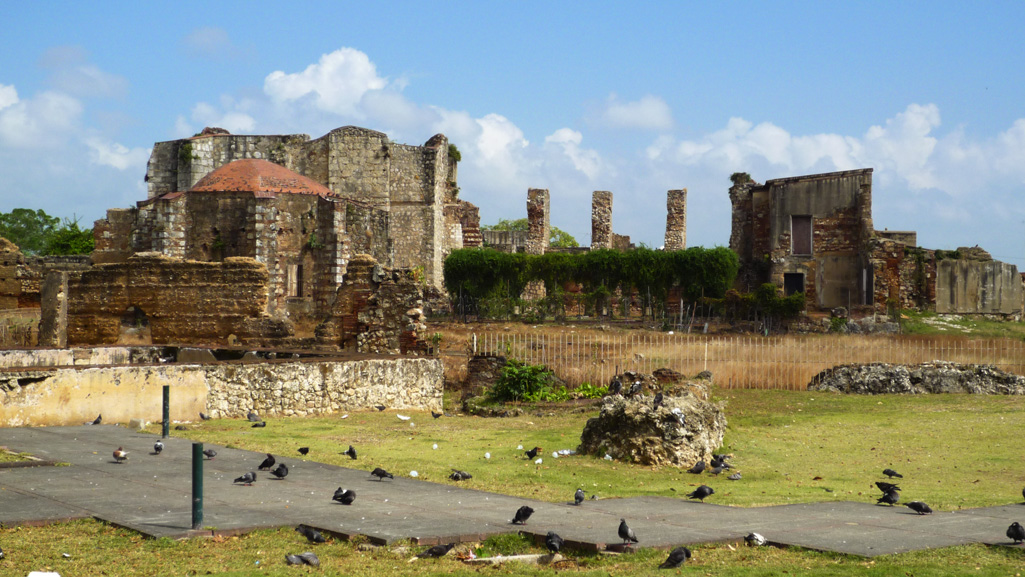
Over the centuries, the monastery was damaged by earthquakes and repaired. It was a mental asylum from the 1880s to the 1930s.
The ruins are now used for cultural events. Guarded from the public by a fence, the ruins are visible from the street. You can still see how impressive the building may have been so many years ago.
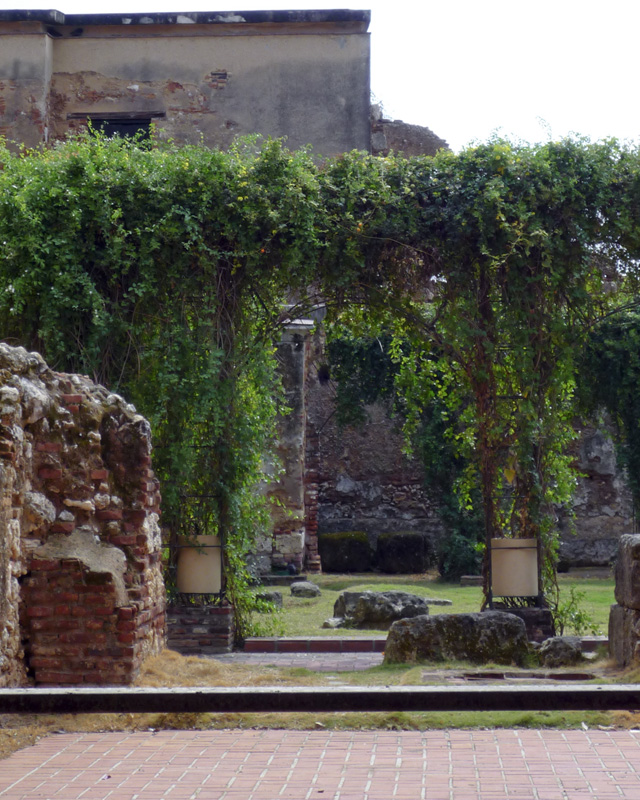
Walking past the monastery, you enter an area of small streets, winding down back to the southern part of the city.
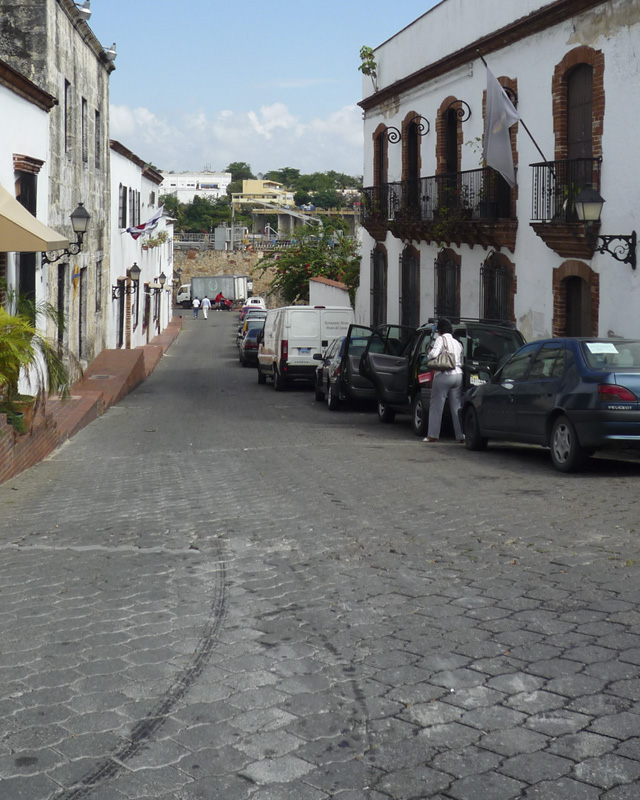
We returned to the area of our hotel, and walked west on Calle el Conde. This is a very busy shopping area for both locals and tourists alike. Shoe and clothing stores dominate both sides of the street.
West Side Of Zona Colonial
By this point in our walking tour, it was almost mid-day. We stopped at a small restaurant on Calle el Conde to re-energize and continued on to the Parque Independencia.
The stone, arched gate – the Puerta del Conde – is a historic spot commemorating the Dominican independence of Haiti in 1844.
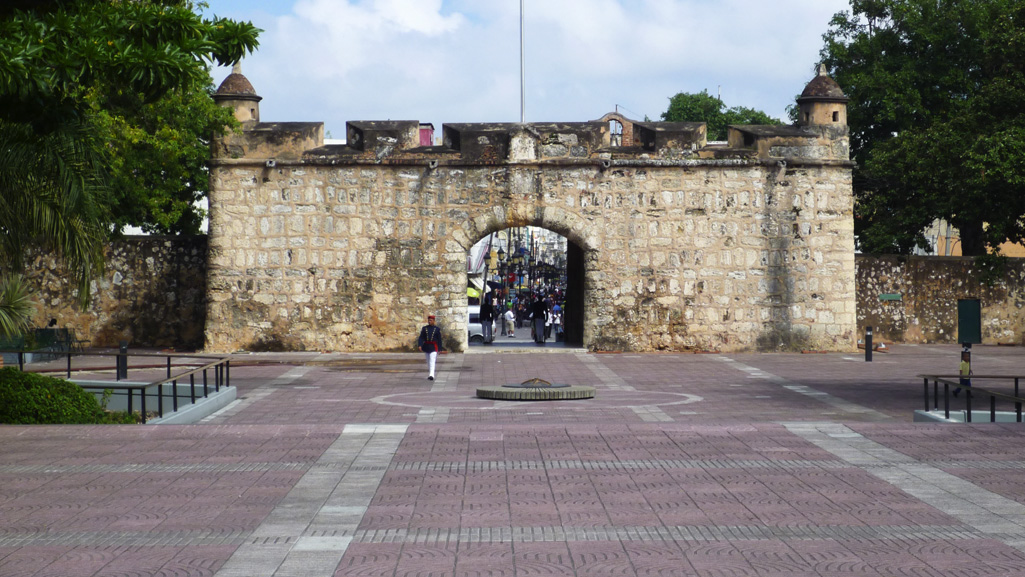
When you walk down Calle el Conde, you can see it from the distance. The Altar de la Patria, located nearby the gate, is a mausoleum housing the remains of the Founding Fathers of the Dominican Republic.
Moving south from this area, we wandered the residential streets, looking at the local architecture. Old crumbling buildings, with weathered stone facades and wooden doors and shutters are neighbours to slightly more modern buildings with brightly painted walls of deep blue, baby pink and golden yellow.
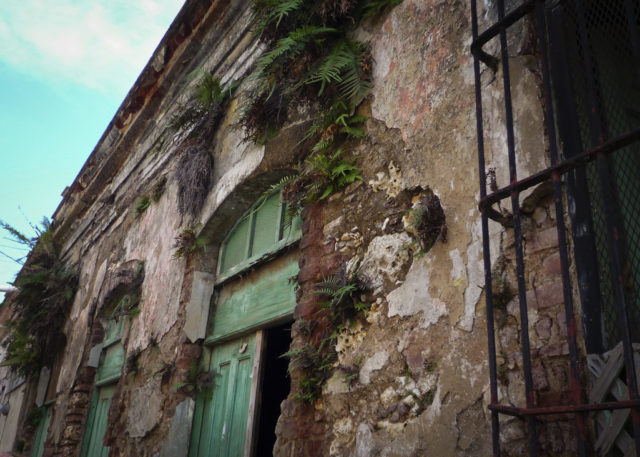
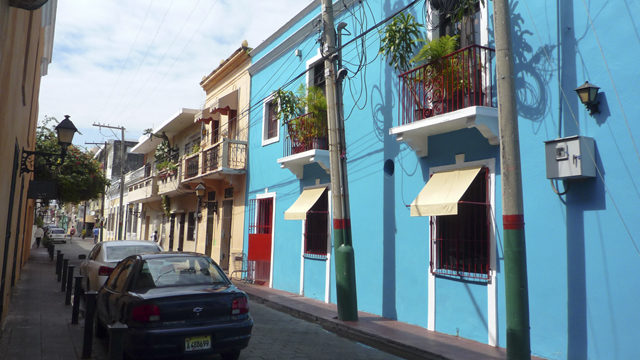
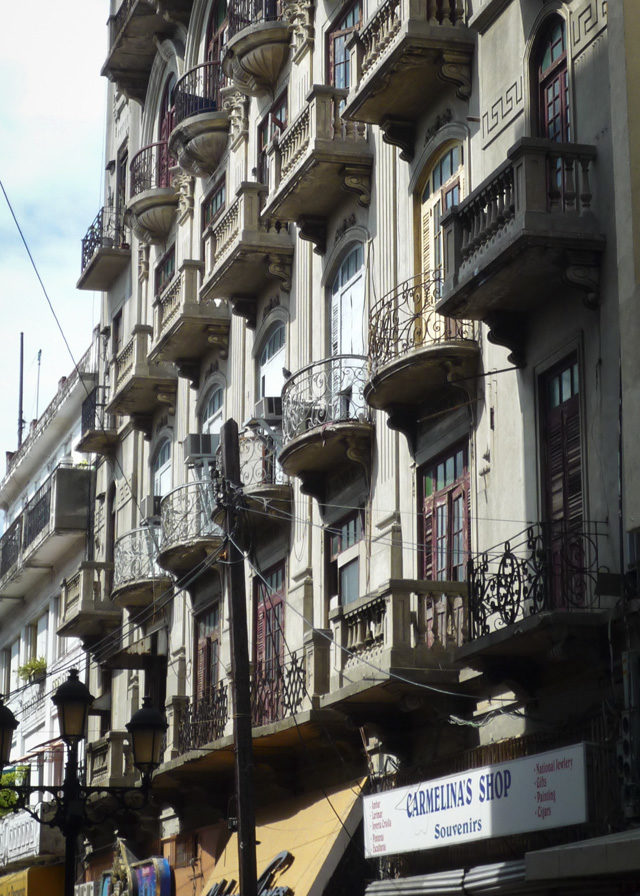
We started walking back to Parque Colon, stopping by Parque Duarte. This is a square with the statue of Juan Pablo Duarte, one of the founding fathers of the Dominican Republic. We continued towards the west side of the cathedral.
The whole walking tour took about five to six hours of leisurely exploring. We burned enough calories for us to enjoy a delicious dinner at an Italian restaurant on Calle el Conde.
During dinner, Agnes and I had the opportunity to meet with local Santo Domingo artist, Angelo Gonzalez Urelly. His award-winning art exhibits in the Dominican Republic and other galleries around the world.
After dinner and drinks, tired from a full day of exploring, we walked the short distance back to our hotel. We could have visited every museum and location. However, we would have needed two days to do so.
Books And Resources On Santo Domingo
Today there are many apps that can be used for walking tours of cities around the world, including Santo Domingo (e.g. Triposo).
I used the traditional tour book route – Fodor’s and Lonely Planet for the Dominican Republic. Each had a section on the Zona Colonial as well as maps. Purchasing the most recent versions is the best idea. This is so that you have the most up-to-date information on visitor attractions, shopping, and dining option.
While some of the attractions and locations have changed since 2009, the historic sites remain.
More photos from my walking tour of Santo Domingo:
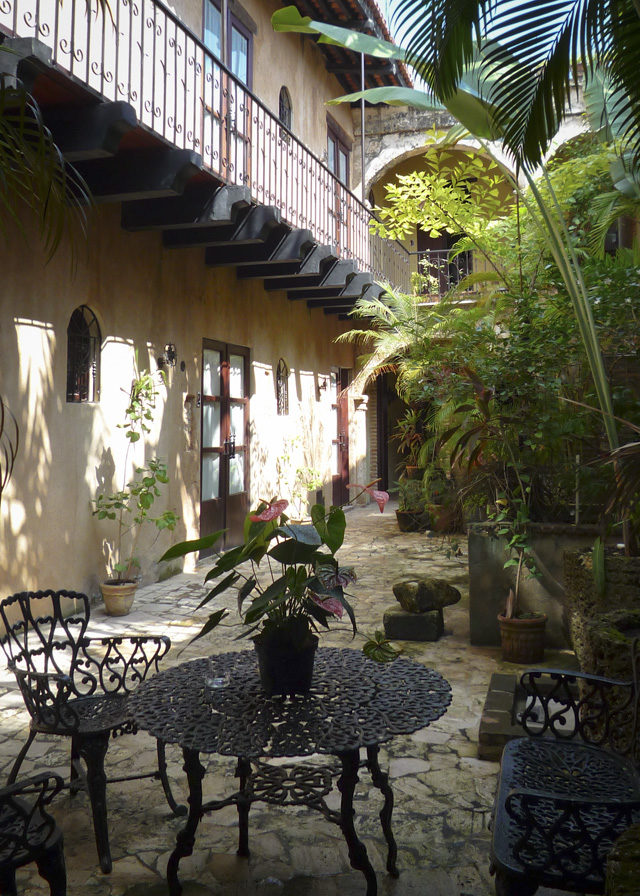
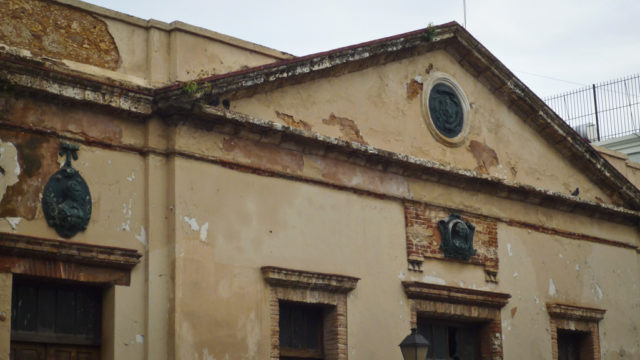
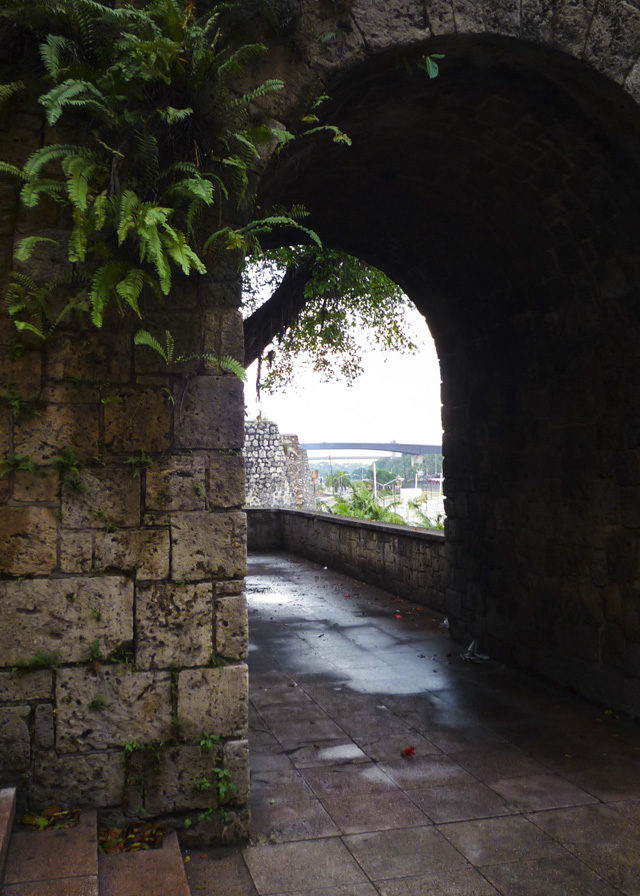
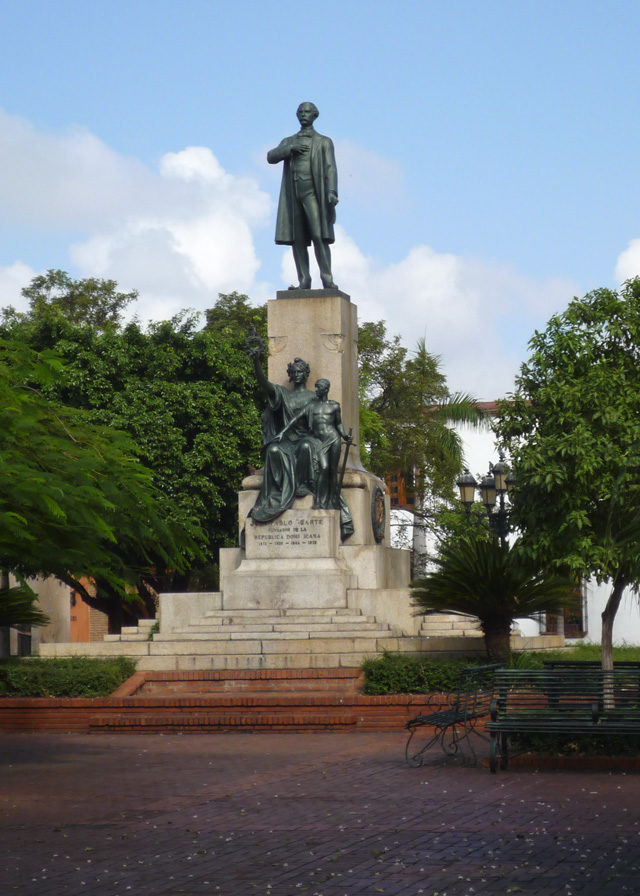
QUESTION: Would you go off-resort to do a walking tour of Santo Domingo? Have you visited the city? Share your experience in the comments below.
Like this post? Share it on Pinterest!
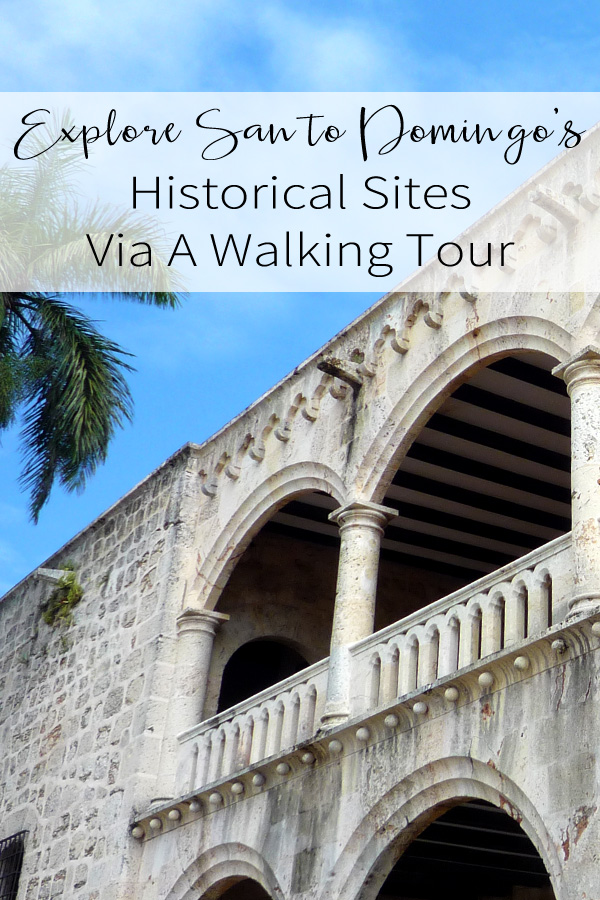

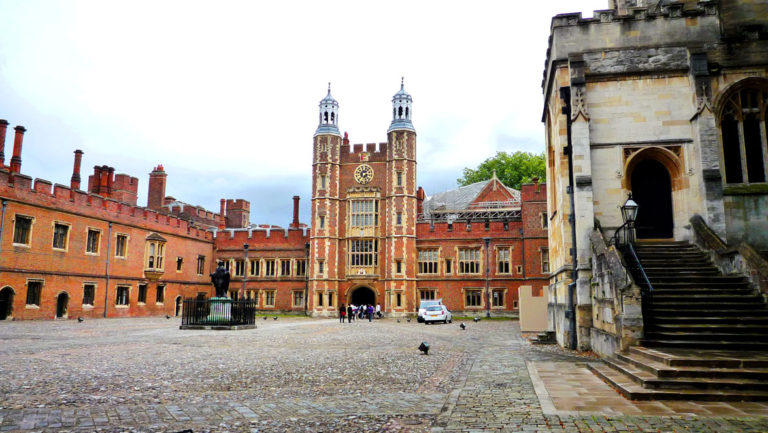
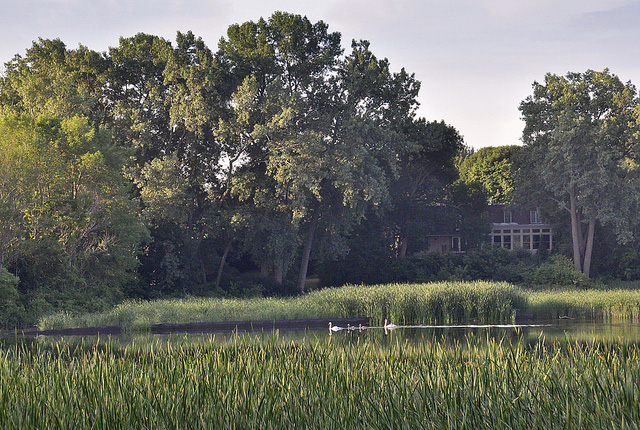
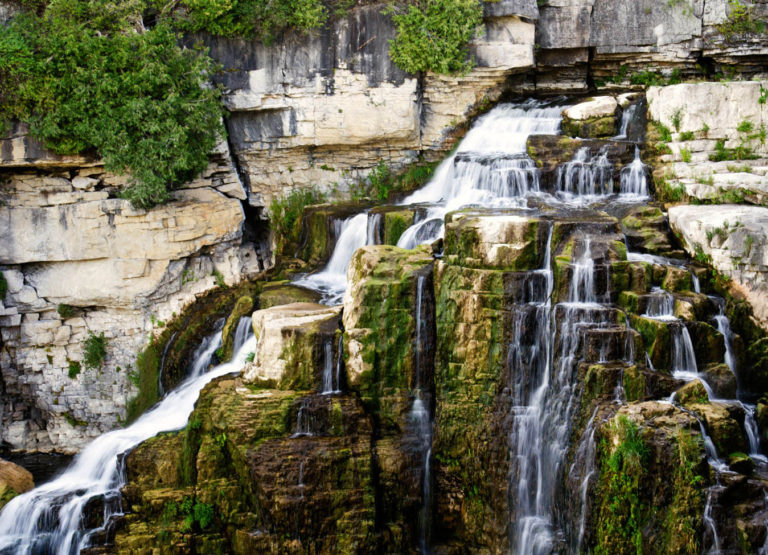
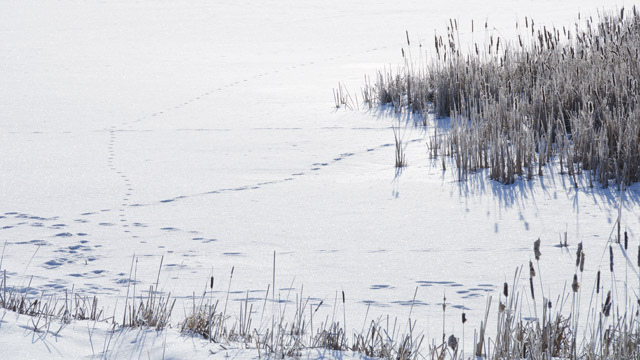
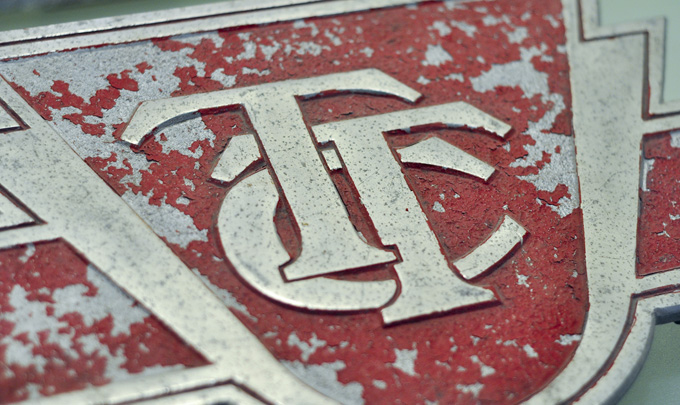
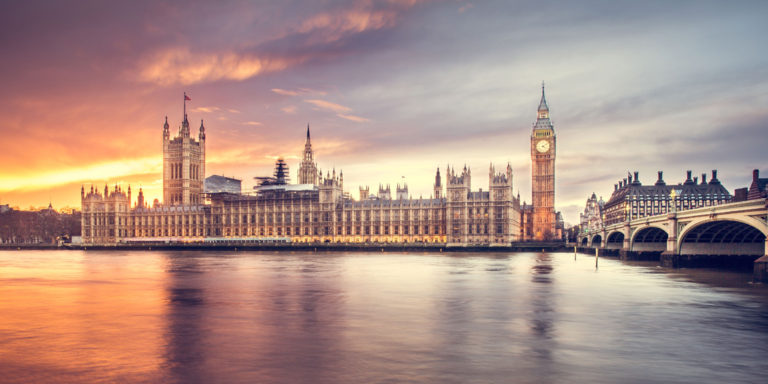
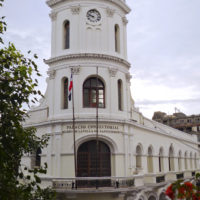
I’m heading to DR on Feb 26th from Vancouver Island. I can’t wait! It’s my dream vaca! Unfortunately I’m now 61, so won’t be doing the crazy stuff. But I do want to see the capital and more. I’m staying at El Faro in Punta Cana (I am a sun-worshipper after all). So I plan for beach time. What would you recommend? Is it easy to get around? Is it worth paying for the tours of SD?
James, I’d love to be in the DR right now – anything to escape winter in Southern Ontario. Definitely enjoy the beach. If you can do a a day trip to Saona Island that would be worth it – I’ve heard great things about it. If you decide to escape the beach for a day or two, doing the tours to Santo Domingo is worthwhile – full of history if you like that kind of stuff. It’s always easier with a guided tour.
Brilliant! Thank you 🙏 Memories of my days in Ontario and Quebec. I don’t miss the winters. I’m going to be headed to Toronto after DR for a few days before heading home to Vancouver Island. We’ve had a surprise dump of snow in the last week. Hopefully it’s all melted in the next few days.
We’re in Burlington – it’s been a foot of snow. More coming! Wish I was in the DR.